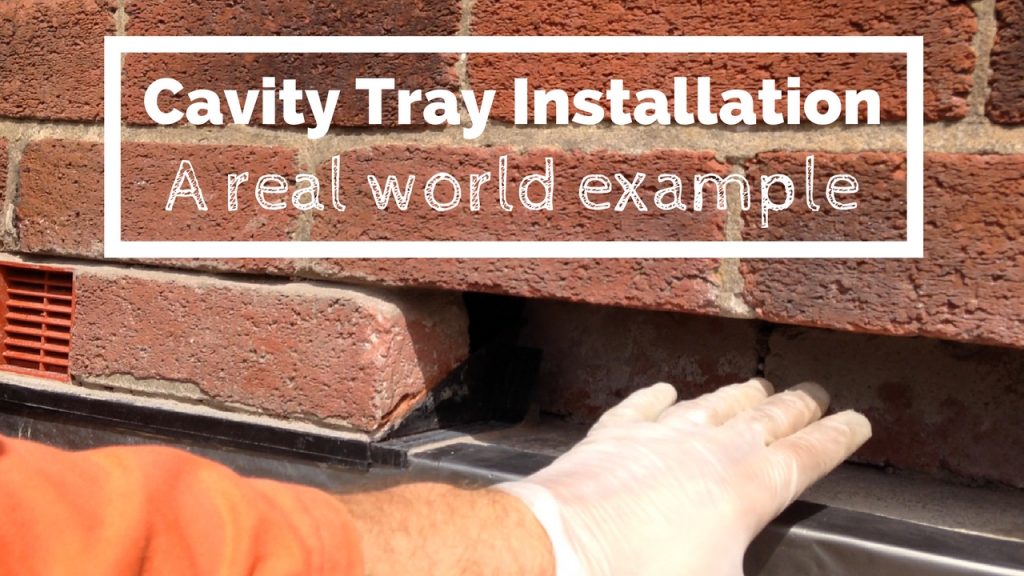
Cavity tray installation – these three words might not exactly fill you with excitement but, if you would like to live in a damp-free home, this article is worth a read!
What are cavity trays?
Cavity trays are pre-formed polypropylene trays. They are installed into the external bricks of a cavity wall and their purpose is to collect any water dripping or running down the cavity. Correctly installed cavity trays collect this water and transport it back to the outside of the bricks – rather than allowing it to migrate onto the inner leaf of bricks, which would cause damp issues in the property.
In my case, I had damp coming through the front wall of our house in Blackpool (a town on the North West coast of England which receives plenty of wind-driven rain). The property has concrete lintels running across above the windows and – as the property was built before cavity trays were available – these lintels had lead flashing incorporated to prevent water ingress. Unfortunately, the lead flashing was installed in long sections of up to 3 metres long. Modern building regulations specify that lead should be laid in strips of 1.2 metres long maximum to allow for differential thermal expansion and contraction. Over the course of several decades, the lead flashing had developed cracks. As a result, the moisture in the cavity was therefore not being expelled properly, hence the damp on our internal wall.
In the past I have found it difficult to find trustworthy tradesmen (I’m biting my tongue here as I like to do my best to always be positive…) so I decided to tackle this job myself. In case you haven’t noticed, I have a habit of doing this!
So, I set out to resolve this problem and decided to replace the damaged lead with modern cavity trays. This involved removing 23 bricks in a line across the front of the property (a few at a time – otherwise I could have become ‘that bloke who made the front of his house collapse’). If you want to know how I did this then please see this post. Removing the bricks the way I did meant that I didn’t have to source replacements, which saved me a ton of hassle, as the old imperial sized bricks used to build my house are no longer available.
As per my normal modus operandi, I scoured the internet for cavity tray installation information. All the YouTube videos I found about cavity trays were computer animations, rather than proper videos, so I decided to film my cavity tray installation procedure and upload a real world example video to YouTube. It’s had a few thousand views already, so hopefully it is proving useful to someone.
Watch my video ‘DIY Cavity Tray Installation (Type E Cavitrays)‘ below:
So, to recap, the cavity tray installation process can be summarised as:
- Source some cavity trays to suit the application (they come in various formats, for different applications)
- Measure and plan the job several times over before you go any further (a ‘think twice, cut once’ type approach is always prudent!)
- Remove the necessary bricks
- Thoroughly clean out the cavity
- Test fit the cavity tray (if the tray is ‘interfered with’ by wall ties, you may need to judiciously modify the tray in order for it to fit)
- Bed the cavity tray on mortar
- Reinstall the bricks and a weep vent with mortar all round
- Allow the mortar to dry
- Once the mortar is dry you can ‘move along the line’ and remove more bricks to allow you to install further trays
- At the end of the job you can point the whole line of bricks together
If you have any comments or questions then please feel free to add them below. I hope this post has been useful to you and if so, please share it on social media to help me put food on our dinner table!
Cheers!
Chris 👍








Leave a Reply